The Serie A fight for European spots continued with Lazio’s intelligent 3-0 win over Milan. Stefano Pioli’s team, who spent a few months at the top of the league freed the leading spot for Inter and are currently fighting for their fifth-place which will secure them a Europa League contribution. Lazio on the other hand seem to have the same plans and earned important three points in their efforts to bypass the Rossoneri who are currently level at points with Juventus.
Lazio’s intelligent strategy to invite the pressure in their own half and catch the opposition on counter worked perfectly, with Pioli’s side continuously overcommitting to their build-up and attacking actions, leaving spaces behind that cost them the game.
Zlatan Ibrahimović’s absence was crucial for Milan and the Rossoneri struggled in converting their chances into goals. It wasn’t only a matter of poor finishing but also of Lazio’s well-structured defence who managed to keep their opponents away from the box which forced them into shooting from distance.
This tactical analysis examines what when wrong for Milan and how Simone Inzaghi’s tactics led the team to an important victory.
Line-ups and formations
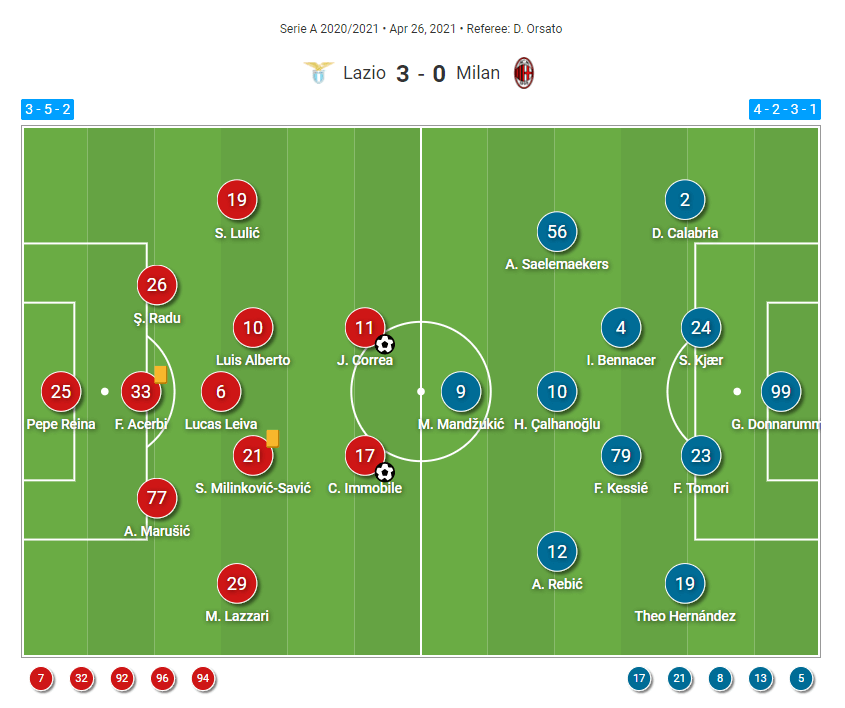
Inzaghi set Lazio up in their usual 3-5-2 formation and fully stuck to their main traits. The goal was covered by Pepe Reina, while the back-three was formed by Ştefan Radu, Francesco Acerbi and Adam Marušić who brilliantly managed to stop most of Milan’s efforts in the box. In midfield, the manager relied on Senad Lulić, Luis Alberto, Sergej Milinković-Savić and Manuel Lazzari. Leiva had a pivotal role in the central areas, stopping the opposition’s attack successfully and being a huge support to the backline, contributing with defensive duels and interceptions. Upfront the team relied on Joaquín Correa and Ciro Immobile who didn’t disappoint, and both turned Lazio’s team efforts into goals.
Gianluigi Donnarumma was on the goal for Milan, with Theo Hernández, Fikayo Tomori, Simon Kjær and Davide Calabria in defence. The defensive midfield was covered by Franck Kessié and Ismaël Bennacer who were key during transitions.
The attacking responsibilities fell on Ante Rebić, Hakan Çalhanoğlu and Alexis Saelemaekers. Mario Mandžukićwas the lone striker who wasn’t able to create many opportunities for the team, being isolated by the Lazio defenders in the penalty area.
Milan relied on a lot of movement in their build-up trying to open the passing lanes with their 4-2-3-1 formation. They were lacking explosiveness in attack though and wasted many of their opportunities.
Lazio’s counter-attacking proficiency
Lazio had a clear strategy on how they want to expose their opponents. They wouldn’t create many opportunities through building up from the back and wouldn’t involve in pressing too high. Instead, they gave away the initiative and positioned closed to their own half, often inviting pressure there.
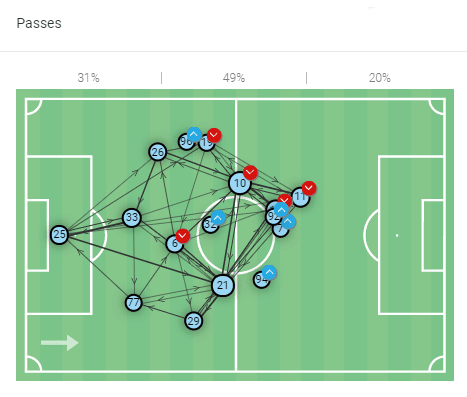
This was done for a few reasons. Firstly, it allowed them to have better defensive stability against Milan’s intense attacking approach. Secondly, they wanted to focus on recovering the ball midway in efforts to counter-attack and catch Milan’ highly positioned defence off guard.
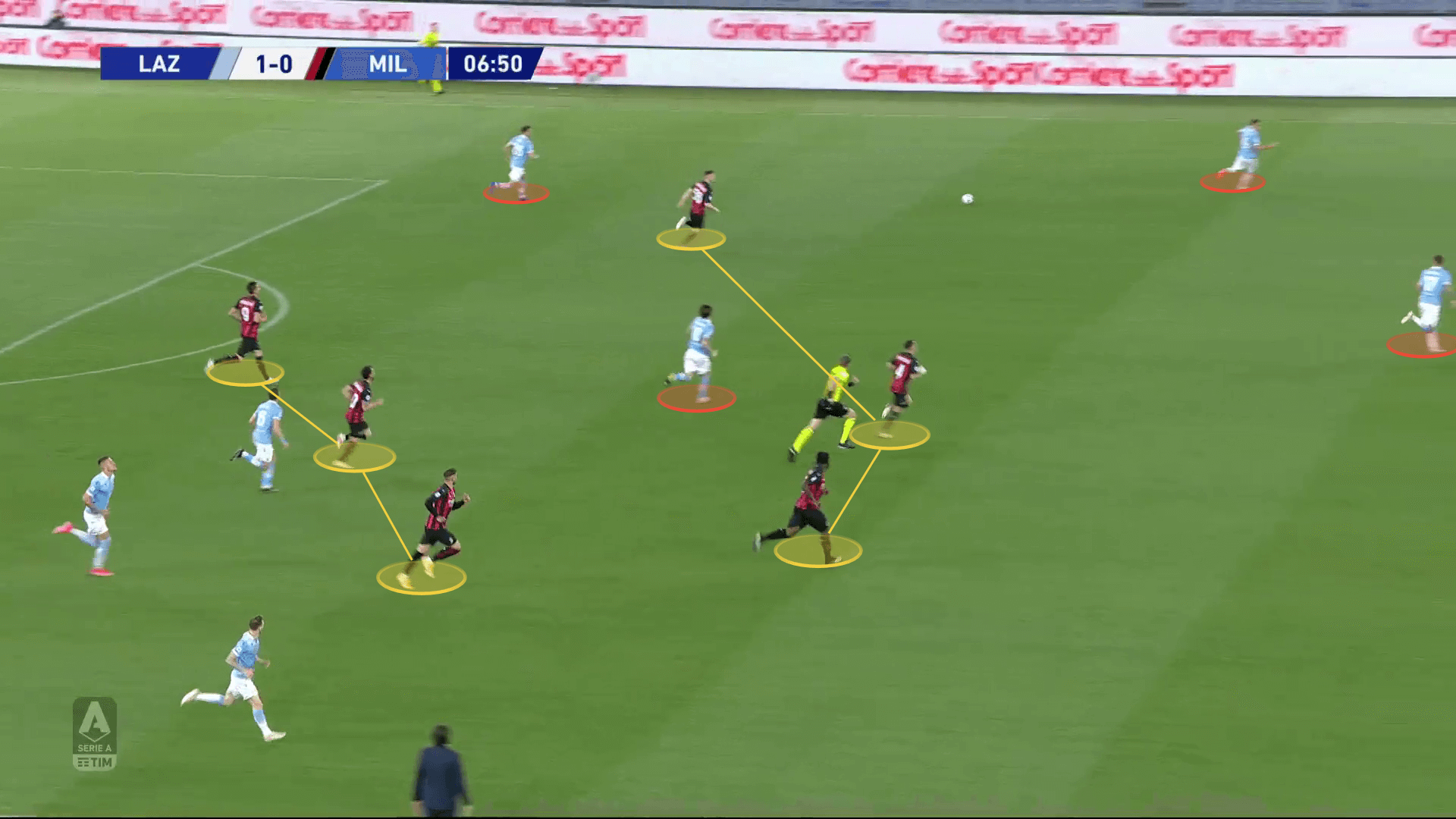
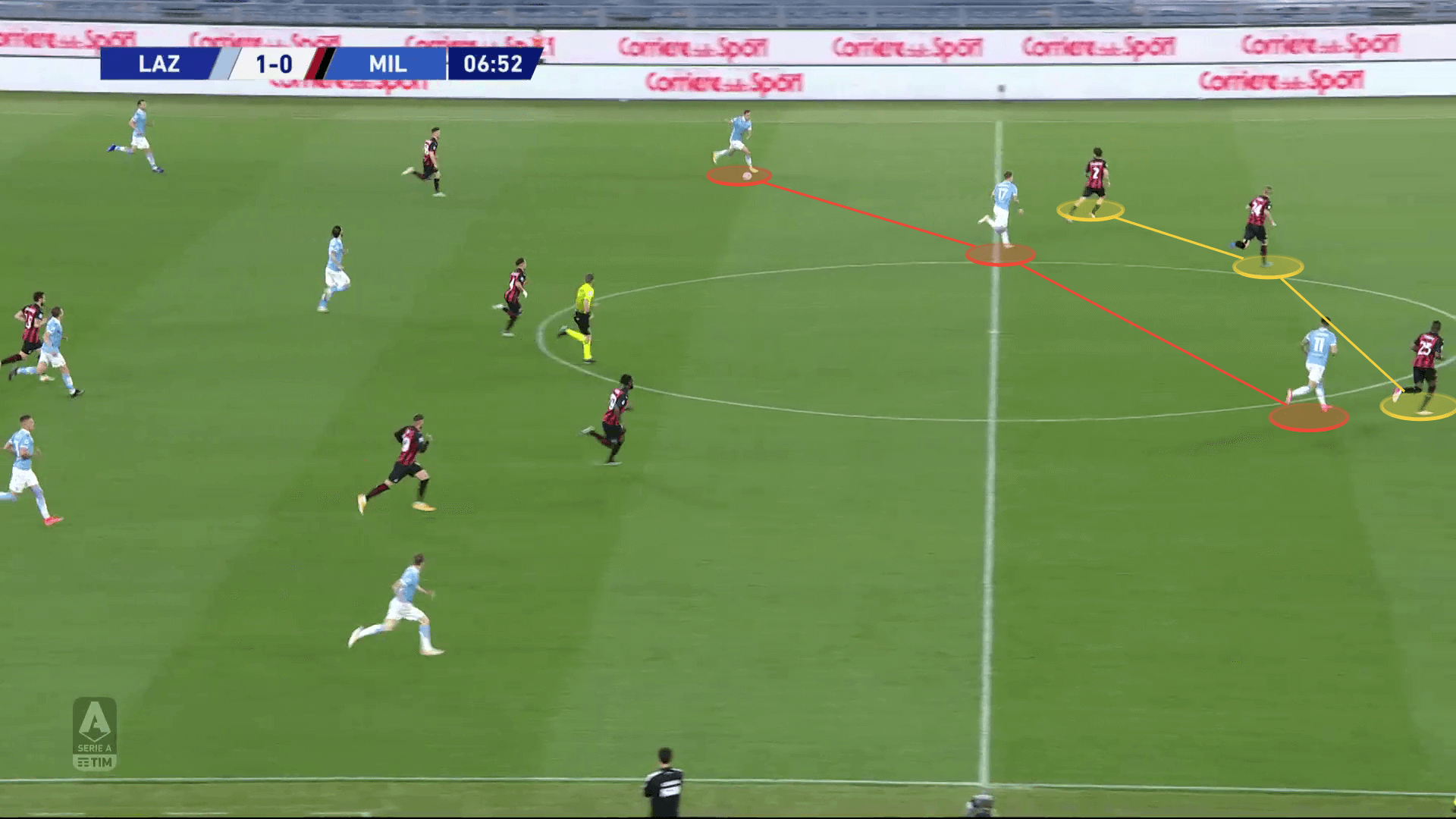
These tactics were successful due to the Rossoneri’s constant attacking efforts. Lazio tried to recover the ball as often as possible and it resulted in them completing 11 counter-attacks. Five of them ended with shots and this was their main way to threaten the goal.
Leiva was the key player in executing that strategy well. He finished the game with 16 recoveries and was the reason for many of Milan’s failed attacks. His defensive contribution, as well as experience in ball progression, allowed the team to reach the advanced areas quickly after recovering the ball and to create goalscoring opportunities with the help of Correa and Immobile.
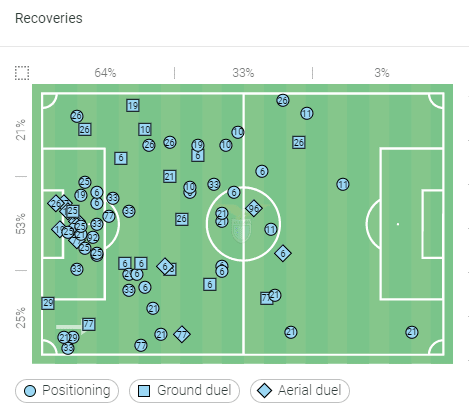
Milan’s continuous defensive errors
Lazio relied on attacking through the left flank and the central areas trying to overload them and expose the opposition. While their counters were executed mostly centrally, they caused a lot of struggles on the left, where Milan’s players often failed to close the passing lanes and structure well defensively. Saelemaekers failed to provide defensive support in the wide areas and Lazio would easily pass through their first line of defence. After failing to improve at the beginning of the second half, Pioli was forced to make four substitutions in 10 minutes to make sure they stop Biancocelesti’s efforts in these areas.
He replaced all of the right-sided players: Saelemaekers, Bennacer, Calabria and even the centre-back Kjær. Along with these changes he replaced Mandžukić with Rafael Leão in efforts to bring more explosiveness in front of the goal.
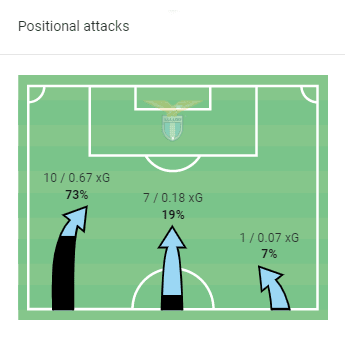
In terms of Milan’s collective defensive performance, they often overcommitted to the attacking actions and were highly positioned which would immediately leave a lot of space behind. They would often find themselves in a numerical disadvantage and fail to stop Lazio’s pacey attacks.
The team struggled in anticipating Lazio’s passes and failed in intercepting the ball which would often leave the opposition to freely progress the ball.
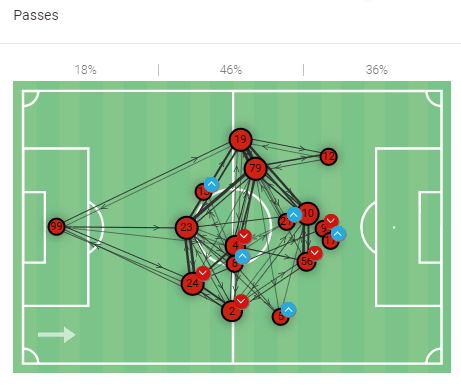
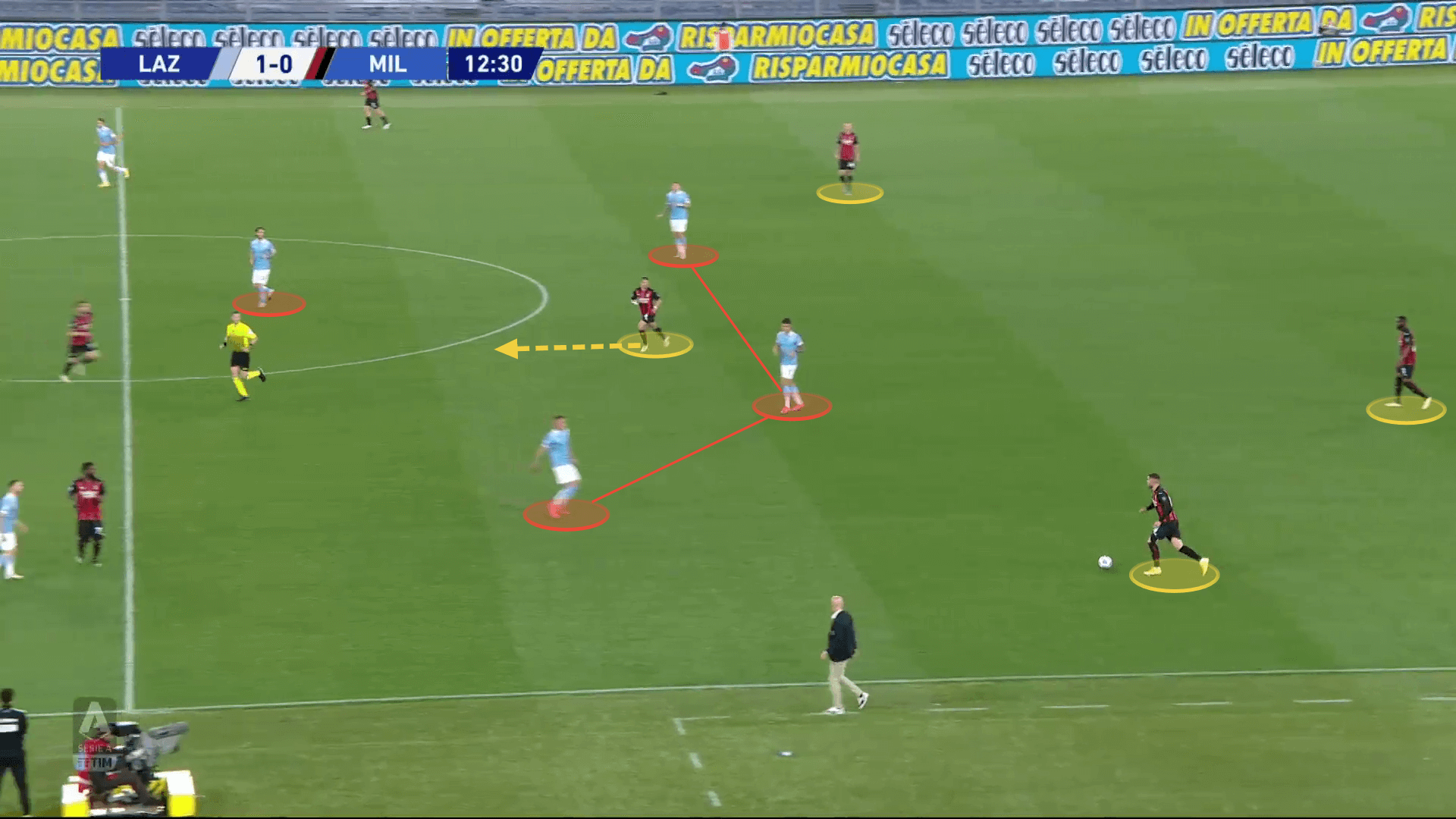
Milan’s inability to move into goalscoring positions
The Rossoneri’s main problem in attack was the lack of smart movement in the advanced areas and certainly the absence of Ibrahimović. While their positioning and actions during the build-up were solid, they failed to occupy the box successfully and move into quality goalscoring positions. They always looked to move off the ball and open the passing lanes but Lazio’s defence was successful in isolating Mandžukić in the final third.
This forced Milan to seek a different solution to threaten the goal. That resulted in them creating long-shot opportunities with more than 50% of their shots being from distance. They started shooting from outside the box due to Lazio’s well-structured defence but poor finishing combined with a solid Reina performance kept them away from the goal.
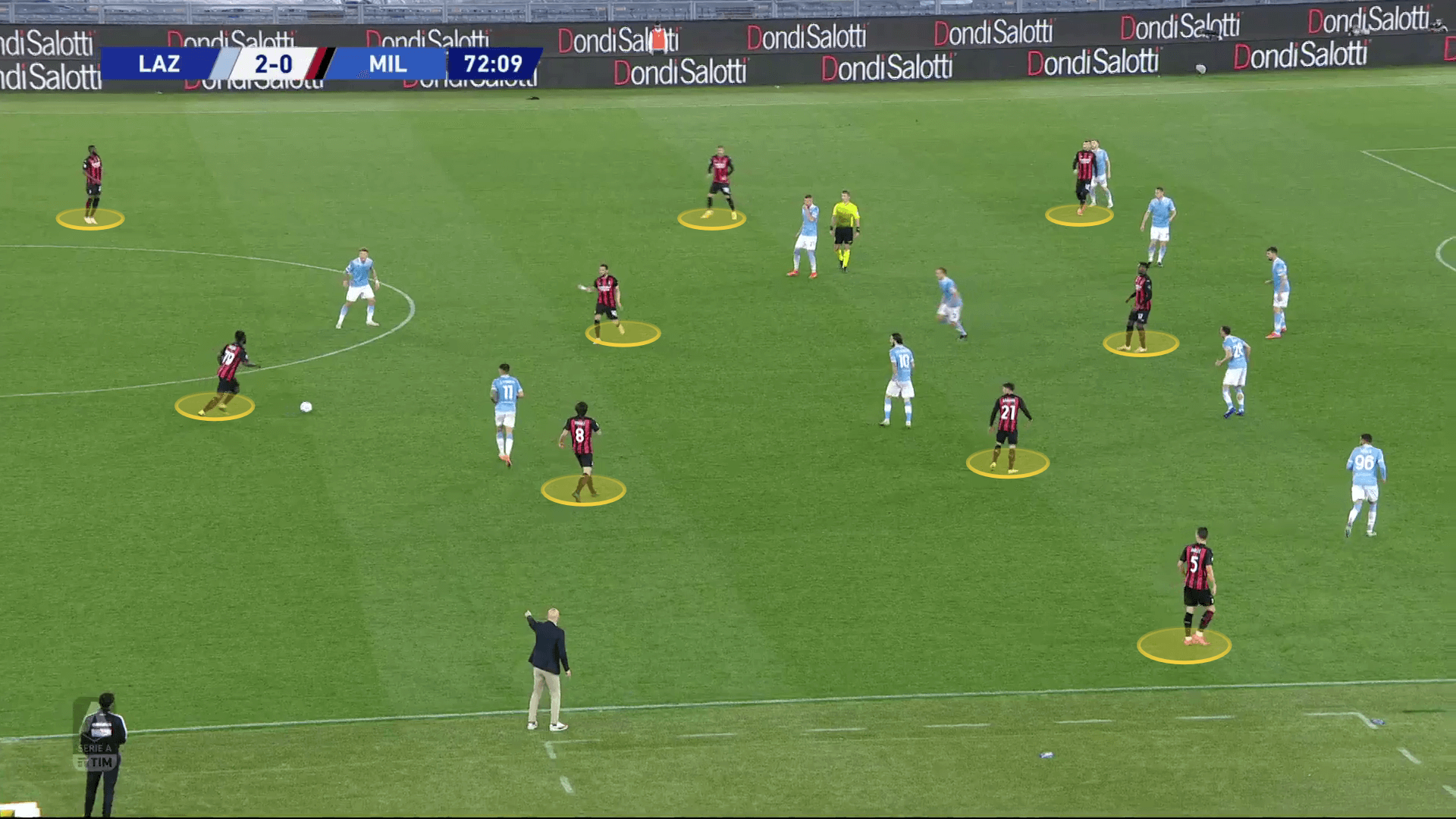
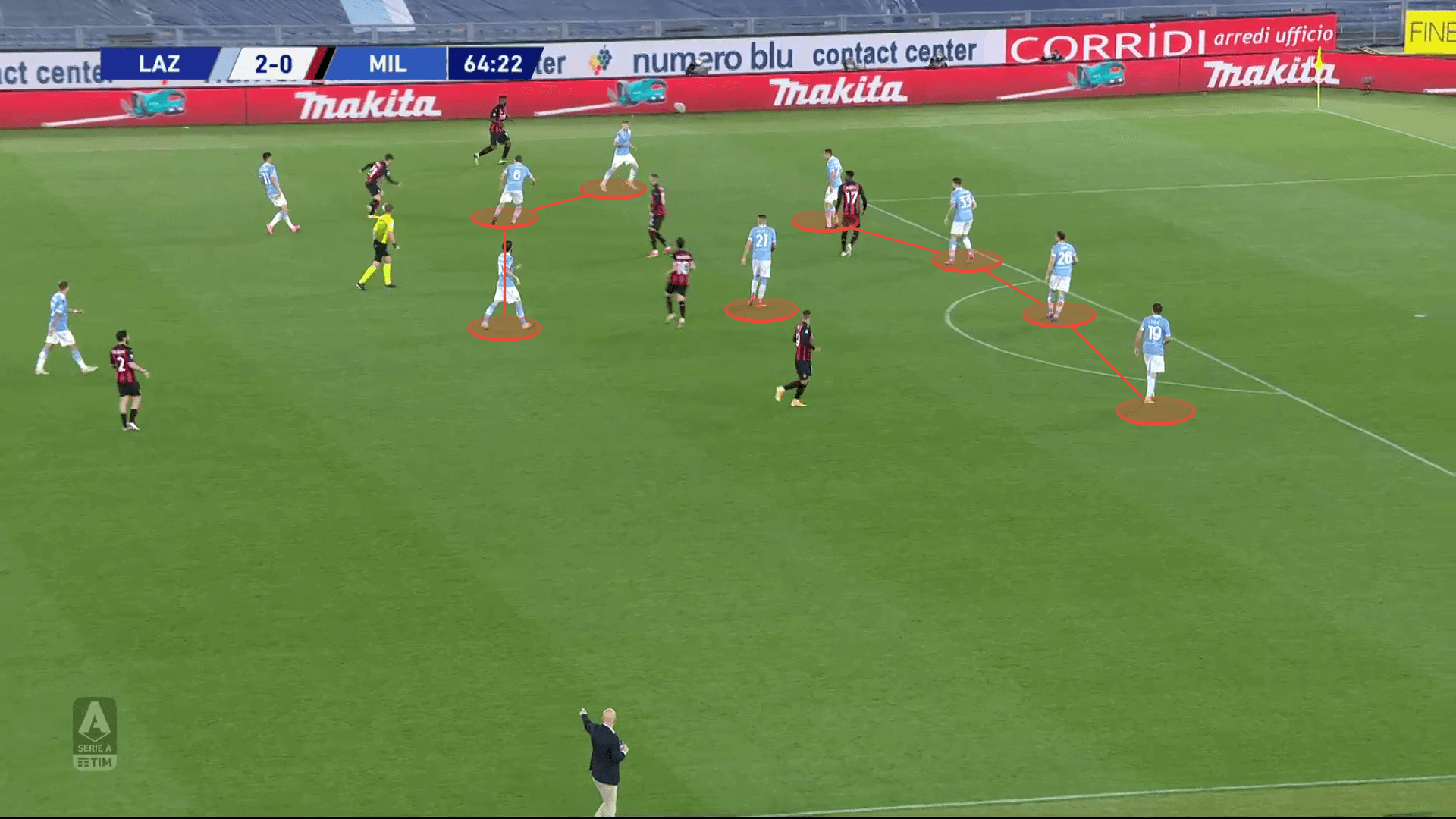
Expectedly that affected their efficiency and only five of their 15 shots turned out on target. The team was lacking the clinical finish and hold up play that Ibrahimović brings in the penalty area. As mentioned, Pioli took actions by introducing Leão in the second half but that didn’t bring a noticeable change in the team’s performance.
Conclusion
Lazio grabbed the three points with intelligent tactics and patience and their pace on a counter caught Milan off guard leading to a disappointing loss. Although Pioli tried to react and adjust to Lazio’s actions, Inzaghi is the one who won the tactical battle by doing his analysis and exploiting Milan’s weakest areas.
This game underlined the importance of Ibrahimović’s new one-year contract and showed that the Rossoneri need to be active in the summer transfer window if they want to stay competitive and fight for the top Serie A places.






Comments